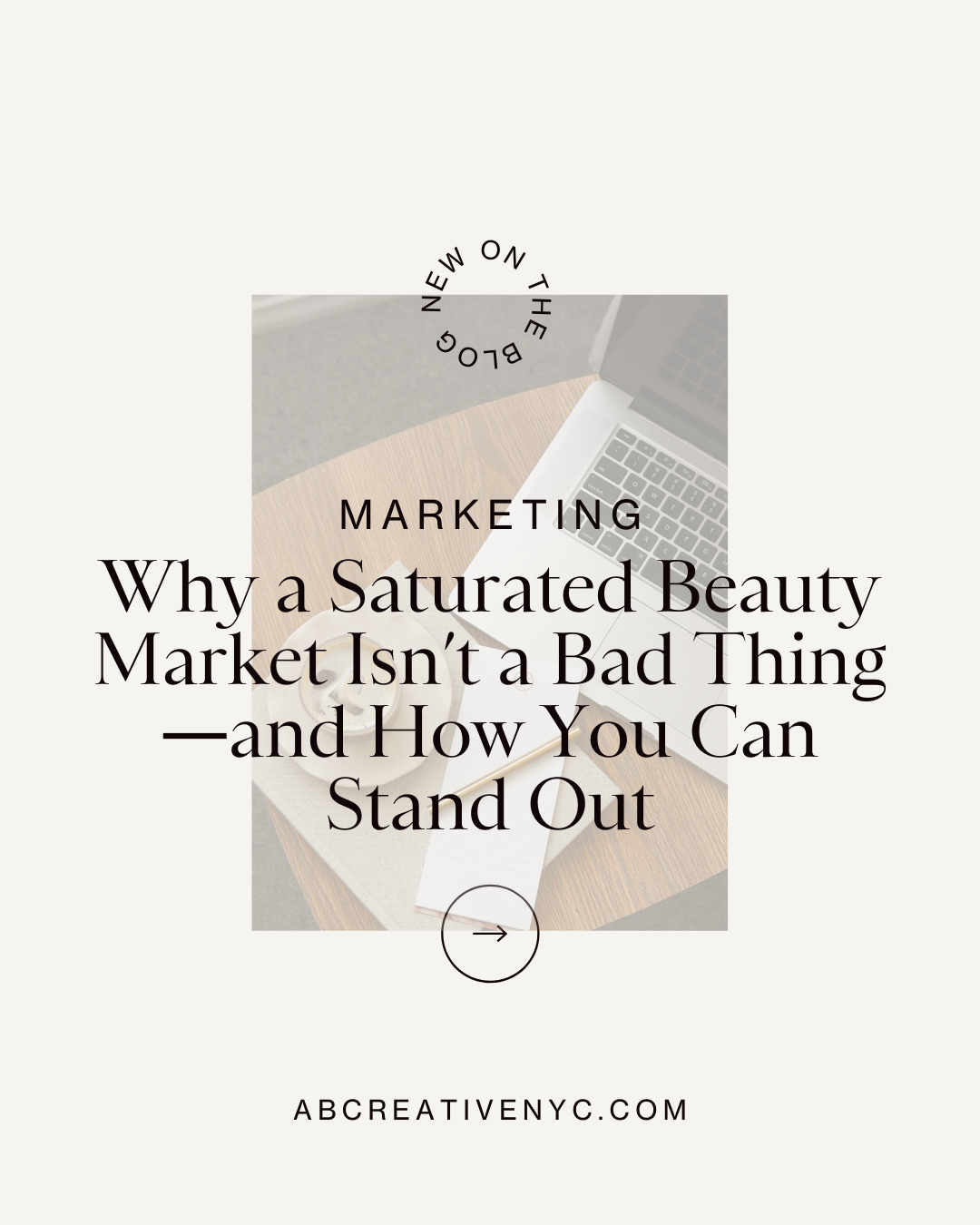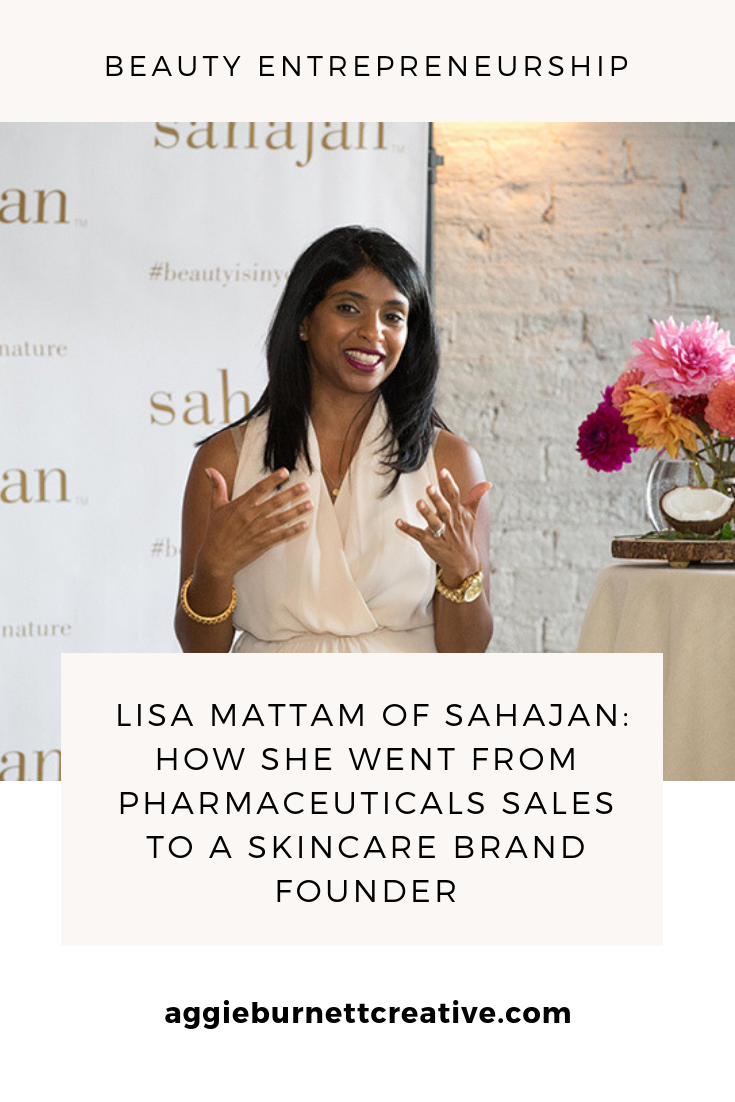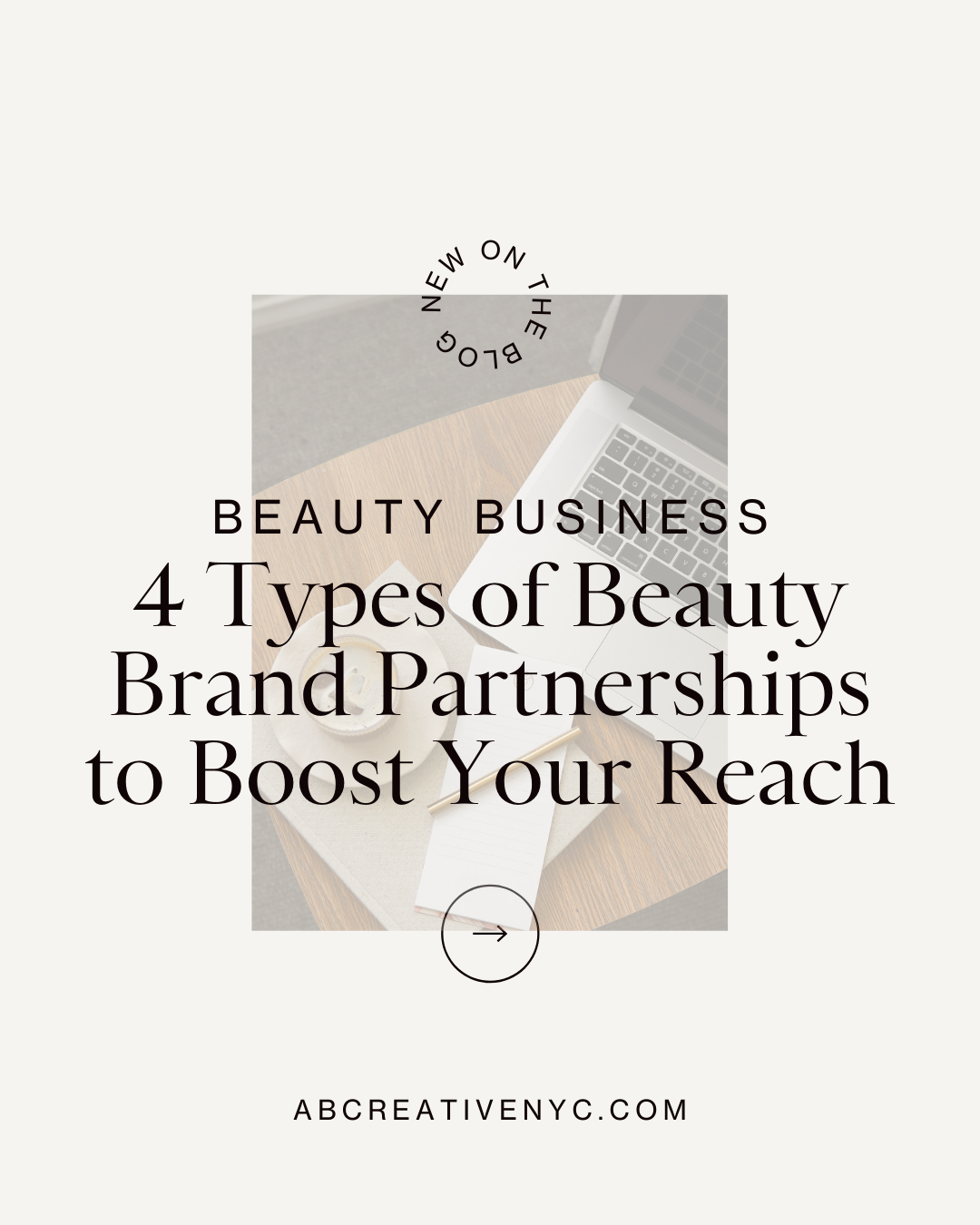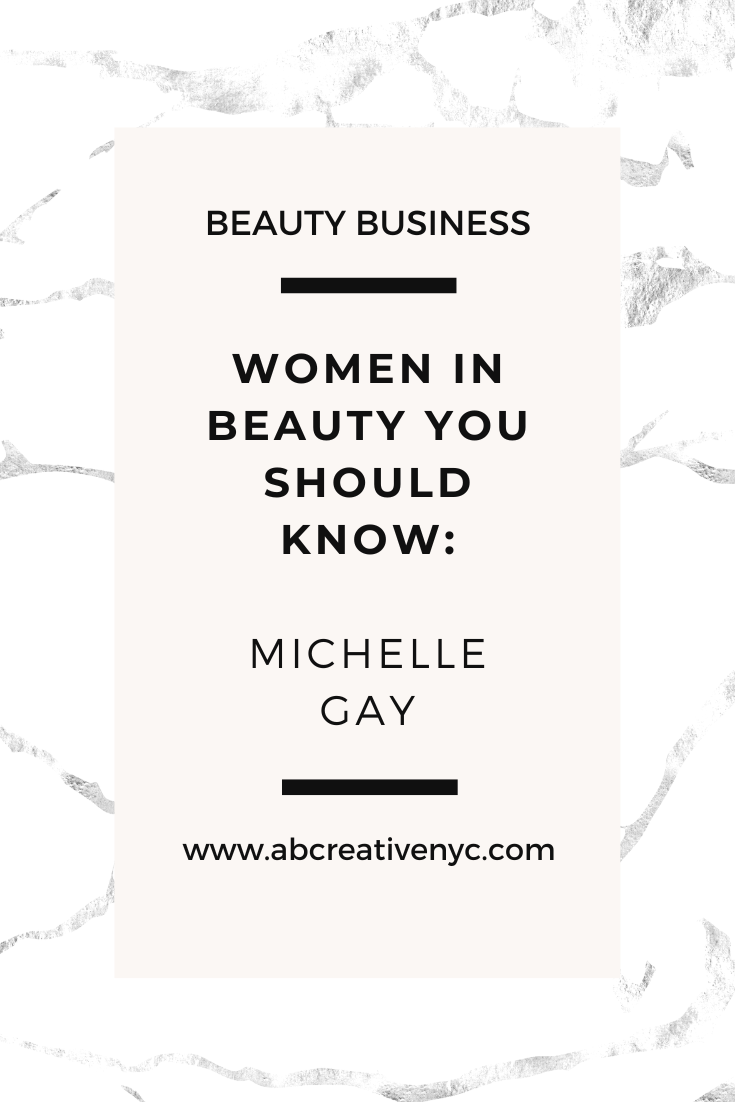The Three Branding Strategies That Will Help You Stand Out in the Saturated Beauty Market and How to Implement Them in Your Beauty Business.
It’s no secret that the beauty industry is heavily saturated. According to a report from McKinsey, the beauty market is expected to reach approximately $580 billion by 2027, growing by a projected 6 percent a year.
There’s a lot of competition out there, but there’s also a lot to gain.
Gone are the days of a few simple choices like L’Oréal and Maybelline at your local pharmacy, or Elizabeth Arden and Chanel at the department store. Now, there are literally thousands of new brands launching every year in retail and direct-to-consumer (DTC) markets, with no signs of stopping.
But here’s why a saturated beauty market isn’t a bad thing:
Create something unique and position it as such among the thousands of copycat brands out there and count on standing out in a saturated beauty market. All those lookalike companies simply won’t last in the long run.
By this point, you’ve probably heard or been told that you need a very specific target customer profile, know your audience inside out, and have a clear brand aesthetic and voice that is consistent across all your marketing and social content in order to truly stand out in a saturated beauty market (If you’re not yet clear on how to do this, check out my Conventional to Cult Status group program here.)
However, there are other, more advanced strategies that aren’t being talked about as much. These are just as important in attracting your ideal customer on a conscious and subconscious level.
Read on to discover three unique ways you can position yourself differently in the mind of your customers. Help ensure that your beauty brand stands out in 2023 and beyond:
1. Reduce cognitive dissonance.
Never heard of cognitive dissonance being applied to brand strategy? Well, listen up kids because this is a super cool strategy that only the most in-the-know brands are employing. Brand Strategist Jasmine Bina, founder of Concept Bureau explains it best: “Cognitive dissonance occurs when two or more modes of thought contradict each other.”
She continues, “If you think you’re financially responsible but then feel guilty spending $400 on a new pair of shoes, you’re experiencing the weight of cognitive dissonance. When you buy a new computer but look up reviews and prices afterward to convince yourself it was a smart purchase, the stress of cognitive dissonance is driving your behavior.”
As a modern-age beauty brand, it is your job to uncover where the cognitive dissonance lies for your customers and how you can close the gap. Perhaps, like TOMS shoes, which donates a pair of shoes for every pair you buy, you create a charitable initiative that allows your customer to justify their purchase and feel good about it. As Bina explains, “Toms doesn’t force you to make the charitable decision; they do it all for you, so all you need to do is swipe your credit card.”
Lush does an amazing job of making its customers feel like they’re the do-gooders they believe they are (the belief) while allowing them to shop (the action) guilt-free. We see this first hand with Lush’s Charity Pot, which donates 100% of proceeds to small grassroots organizations working in the areas of human rights, animal protection and environmental justice.
It’s a body lotion that looks exactly the same and is priced the same as their other body lotions relieving any resistance of feeling like you want to get the charitable option but it’s priced higher or stands out like a sore thumb.
The fun and status-improving description, “philanthropic skin softener” makes you want to identify with it, therefore making customers more inclined to buy it. In fact, the hashtag #charitypot has been used no less than 19.2k thousand times, indicating its shoppers’ eagerness to brag about their philanthropic “donation.”
Lush also helps consumers close the cognitive dissonance between believing they are environmentally conscious and ultimately throwing their garbage into their regular trash bin. In order to close this gap, they created a sustainability campaign wherein you can bring back five empty Lush pots to any Lush store for recycling and receive a free face mask. It makes you feel like you’re doing it for the sustainability factor, even if you’re just in it for the free face mask.
Le Labo helps customers feel a little less guilty about their expensive perfume addiction by encouraging them to bring back their empty Le Labo bottle to the store for a refill and receive 20% off.
Now at this point you may be thinking, but I’m an emerging brand, how can I afford to offer free product or process refills if I’m a solopreneur or have a small team. And my answer to this is, you can’t afford not to.
Consumers now more than ever want to feel like their purchase does and means something more than just the product they receive. The rush of cortisol on a shopping binge no longer suffices the modern consumer.
The Hawaiian-based natural beauty brand, Mahalo, introduced its Perfectly Imperfect (PIP) program because while doing inventory stock, they realized that quite a few jars were being damaged during the manufacturing process.
Then, one time, Maryna Grace, founder of Mahalo, noticed there were far too many damages than usual and thought, “Why not offer something that I have not seen done before, and give an option to our customers to bring home a perfectly imperfect jar of Hawaiian skin love. We would fill these imperfect containers with the same product batches we use for our regular offers, but offer them at 15-25% discount (depending on the jar imperfection).”
The campaign proved to be a big success. Grace continues, “To my surprise, and delight, we had sold out of hundreds of PIP pots in a day. Our customers LOVED the idea.”
She now holds PIP events a couple of times a year notified by newsletter only, and always to major fanfare—each PIP event sells out of products laser fast, often within a few hours.
This is a wonderful example of differentiation through cognitive dissonance by not just offering the standard percentage off promotion that customers expect from any brand, but creating a promotion around a belief that makes the consumer feel great about their purchase, without breaking the bank. (Take note for Black Friday!)
If you can create a product that reduces cognitive dissonance between your customer’s actions and their beliefs, you will win positioning points against your competition.
Most brands are only solving the surface-level desires of their customers, consider using cognitive dissonance to stand out in a saturated beauty market.
Action Steps: Get clear on your target customer’s belief systems and actions. Use a survey to uncover this information if you need to. Do they typically follow ethical and charitable brands? Are they only shopping during promotions or are they willing to pay full price? What does their shopping behavior look like? From there, see if there are any areas where your customer’s actions and beliefs can be linked through the support of your brand.
2. Exercise your polarizing effect.
The “polarizing effect” is a branding term I coined to describe a company’s level of polarization.
Think of a spectrum: On the one end you have a generic, bland, no-name, brand, and on the other end, you have a brand that is “out there,” controversial, always in the media (whether for good or bad reasons).
Assuming all other necessary needs of a successful business are being met, the more polarizing you and your brand are (to a degree), the more successful it will be.
Consumers want to feel like they’re part of a movement… like they’re making a statement about their identity when they use your brand.
A powerful statement and movement make the consumer feel special—like they’re a part of something different, and that there’s a real, beating soul behind the brand.
Take Herbivore Botanicals as an example. This brand applies the polarization effect to its ingredient choices.
While seemingly every brand under the sun was using retinol in their products, Herbivore came out with the anti-retinol product: bakuchiol.
Herbivore applies the polarization effect to product naming, too. While tons of brands are naming their products after the key ingredient, Herbivore is doubling down on their Eastern medicine roots and naming some items after crystals and stones, as with the Emerald Deep Moisture Glow Oil or the Lapis Facial Oil.
April Gargiulo, founder of cult-status brand Vintner’s Daughter had only one product at a price point of $175 in her offering for 8 years. Once more for the people in the back: one product in 8 YEARS.
In the early days, Gargiulo had labs turning her down left and right because they said she had to launch with 5 products at once. However, from its inception, the brand was featured in media like Well + Good, Into the Gloss, and Refinery29 and became a best-seller in retailers like Net-a-Porter, Cap Beauty, Follain, and The Detox Market without doing any kind of advertising.
In Robb Report, she says, “We’ve never before paid for marketing—ever. We’ve grown girlfriend to girlfriend, sister to sister, daughter to daughter, coworker to coworker. It’s grown through people being stopped on the street and getting asked, ‘What are you doing with your skin? We’ve been so incredibly lucky that people have had the experience they’ve had. It has offered their skin dramatic results, and they’re [satisfied enough] to tell their friends about it.”
How did she achieve this? By doubling down on her polarizing effect. When everyone was launching a beauty brand with a full collection, Gargiulo stuck to her minimalistic beliefs and launched one oil, an incredibly potent and efficacious oil, and priced it what she knew it was worth.
In an interview with Vogue she says, “I like the idea of not putting new stuff into the world unnecessarily,” she explains. “I am not going to do things just to fill up a drawer.”
Her positioning strategy worked because she had thousands of evangelists, editors and redditors claiming it was “the face oil to end all face oils.” If you search, “Vintner’s Daughter worth it,” you’ll find piece after piece of loyalists claiming the pricy oil is, in fact, worth every penny.
To use the polarization effect for your own brand, double down on your values and beliefs.
Action Steps: Pin down the values and beliefs that set your company apart. How can you build a movement around them? What conventions are you breaking? How is your product a reflection of those beliefs? If you catch yourself saying, “This is just how it’s done,” or “Everyone is doing X,” ask yourself, “why?” Then ask “why?” again until you find a point of contradiction with your own beliefs. Then do it your way.
3. Carve out your niche in a saturated beauty market.
When working in a saturated market, one of the best things you can do is create your own category, your own niche. By doing so, your brand will inevitably be the first in that category.
Why do you want to be the first? Because you want to be seen as a leader, an authority of that new category and you want to do so in an uncrowded territory. A good book I recommend to understand this concept better is Blue Ocean Strategy.
For example:
- As the first brand to coin the term “pro-aging”—in contrast to the negatively connotated “anti-aging”—Allure Magazine started a whole new conversation. While most brands were still telling women they needed to erase their aging marks to stay youthful and desirable, Allure flipped the script, encouraging women to embrace their natural skin at any age.
- Birchbox was the first brand to create the category of DTC monthly subscription boxes, which allowed people to discover new beauty brands in the comfort of their own homes. Birchbox transformed the traditional beauty-sampling model, which typically involved going to retailers’ physical locations, moving from station to station asking for free, small samples after speaking with a salesperson. Birchbox took the awkwardness out of obtaining samples and customized them to subscribers’ wants and needs. The subscription box became a completely new category in the beauty world and has spawned numerous copycats.
This isn’t as hard as it sounds. I recently worked with a brand where after uncovering the founder’s bigger why and movement that she wanted to create based on her personal life experiences and stories, we found that the products she was most drawn to we kept describing with one specific adjective. Then we realized that we could actually create a whole new category around that adjective. (Since the founder is coming out with an industry-changing product, I am not yet able to reveal the category created.)
Action Steps: Ask yourself: Is there a unique category your brand is leading? Maybe it’s an ingredient category, or a specific demographic or skincare-need, such as skincare for people with albinism, or maybe it’s a completely new process of discovering and experiencing beauty in general.
Maybe it’s about changing the way different demographics are spoken to. Can you have an empowering conversation where it doesn’t exist?
Pro tip: Do you have the opportunity to create a new category (don’t force it if it’s not in the cards for your brand), you need to market the shit out of it and claim your position as the first. If it’s truly an innovative category, you will have copycats quickly.
In today’s saturated market, people are seeing that others are making heaps of money in the beauty industry, so they’re jumping on the bandwagon to reap the rewards as well. This creates a big opportunity for you, the founder who knows to go left when everyone is going right. The founder who’s looking to build something with integrity for the long run, rather than a cheesy, short-sighted win. The founder who’s building a brand that pushes the industry toward innovation by closing the cognitive-dissonance gap for customers, discovering the ideal polarizing effect to get customers on board with an exciting movement, and creating a new category that positions a brand as the first of its kind.
Remember, it’s not enough to simply uncover your unique positioning angles. You also need to communicate them clearly to your customers and the world to connect and convert.
I would love to know how you’re flipping the script on the beauty industry. Where are you challenging the status quo? Hit reply to share your thoughts; I’d love to hear from you!
Want help in uncovering your company’s cult-status brand positioning? Want to be the kind of brand that has customers hopping on waitlists and spreading the word of your brand for you without you even asking? Learn more about how you can do this here.





